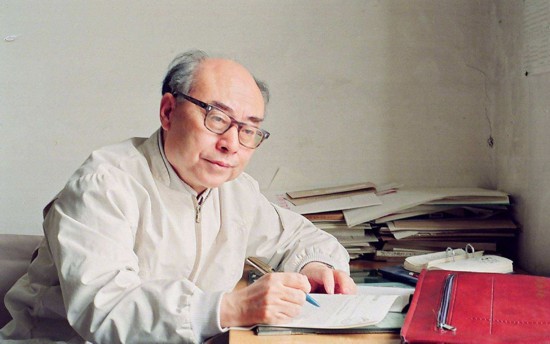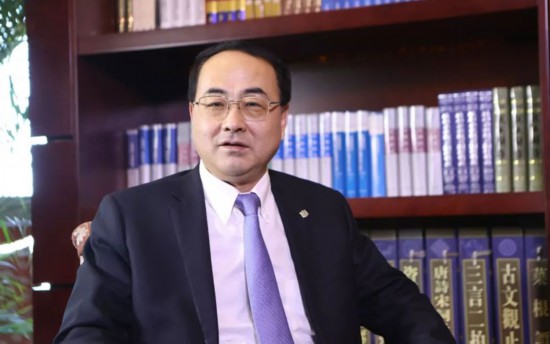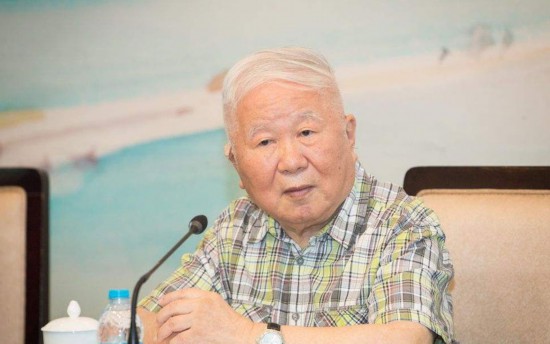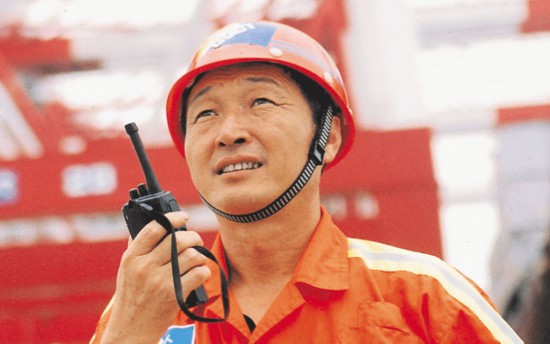After 40 years of agitation, 30 scientific and technological workers were awarded the title of "pioneer of reform"
Editor’s Note: In the past 40 years, with profound patriotic feelings and superb academic attainments, generations of scientists have made outstanding contributions to the innovation and development of the motherland, and together they have formed a brilliant star in the era of reform and opening up, leaving a trail of struggling dreams in the historical wave.
On the 18th, at the celebration meeting of the 40th anniversary of reform and opening-up, 30 scientific and technological workers were awarded the title of "Pioneer of Reform". Let’s get to know them together and feel the spiritual pursuit of diligently seeking and bravely climbing new heights in science and technology.

Yu Min, an important promoter of the reform and development of national defense science and technology.
He is a key figure in the research of hydrogen bombs in New China, and he has put forward an idea that the principle and configuration are basically complete. In October 1965, under his personal organization and deployment, the hydrogen bomb theory was broken. At present, there are only two hydrogen bomb configurations in the world: the T-U configuration in the United States and the Yu-sensitive configuration in China. With his outstanding contributions to the country, he was awarded the "Two Bombs and One Satellite" Meritorious Medal and won the highest national science and technology award in 2014. Looking back on his 50 years of scientific research, Yu Min always said indifferently that everything is for the needs of the country.

Jack Ma, the Innovator of Digital Economy
He is the Chairman of the Board of Directors of Alibaba (China) Co., Ltd. Alibaba Group, founded by him, has built the world’s largest e-commerce platform, with an annual transaction volume of several trillion yuan, which has become a huge driving force for stimulating domestic demand; Establish Internet payment and logistics systems to build commercial infrastructure for small and medium-sized enterprises; Establish the world’s leading mobile payment network and establish a new social credit system through big data technology; Independent research and development of Feitian operating system, laying the foundation of cloud computing in China; Initiate the World Electronic Trading Platform (eWTP) and promote its inclusion in the communiqué of the G20 Summit, becoming an important non-governmental force to practice the Belt and Road Initiative. Under his leadership, Alibaba Group ranks among the top ten global enterprises in terms of market value, which makes China at the leading level in the international competition in the fields of e-commerce, internet finance and cloud computing, and drives a large number of entrepreneurs and entrepreneurial youths to reform, innovate and forge ahead. Won the title of "Zhejiang Excellent Socialism with Chinese characteristics Career Builder".

Ma Huateng, Explorer of "internet plus" Action
Benefiting from the reform and opening-up environment, he founded and led Tencent to grow from a small enterprise with only five people to one of the most influential Internet companies in the world. Put forward the concept of "internet plus", vigorously promote Internet applications such as WeChat, QQ and online payment, and promote digital transformation and upgrading from the aspects of people’s livelihood and government affairs, daily consumption, production services, life and health, and ecological environment protection, which has played an important role in the integration and development of real economy and digital economy, traditional industries and scientific and technological innovation. Build the platform of Tencent Foundation, advocate the concept of public welfare for all, and create a new pattern of public welfare with extensive participation, transparency and credibility through information technology. He was awarded the title of "China Excellent Private Sci-tech Entrepreneur" and "South Guangdong Outstanding Contribution Award".

Wang Daheng, the main advocate of the "863" project.
He is a famous applied optician in China. He established the Institute of Optical Precision Mechanical Instruments, and together with many scientists, he proposed the implementation of the "863" plan to the country. He also participated in the China Academy of Engineering in propose to create, and worked hard for many major national projects such as "Big Aircraft". Until he was lying in a hospital bed in his later years, he was still concerned about the development of national science and technology. He once wrote: "The highest pursuit of us old science and technology workers is to take more responsibilities and do more obligations for the country and the nation.

Wang Yongmin, the inventor of "Wangma Wubi Font" to promote the informatization of Chinese characters.
He founded the three principles and mathematical model of Chinese keyboard design, invented the Chinese character input method of "Wang code five strokes font" and pioneered the "Chinese character radical periodic table", which effectively solved the problem of Chinese character input in the information age. In 1998, the "98 standard Wang code" was invented, which is a Chinese character input method that conforms to the national language and character standards and passed the appraisal earlier, and promoted the popularization of computers in China. Its invention technology has won more than 40 patents in China, the United States, Britain and other countries, and won the title of "National Model Worker" and "National May 1st Labor Medal".

Wang Youde, a pathfinder of scientific sand control
He is the former secretary and director of the Party Committee of Baijitan National Nature Reserve Administration in Lingwu, Ningxia. He once led the staff to vigorously promote sand prevention and control, build 600,000 mu of windbreak and sand fixation forest, and control nearly one million mu of quicksand, effectively preventing the Mu Us Desert from moving southward and expanding westward, showing a gratifying situation in which people enter the sand and retreat. Explore the formation of "wide forest belt, multi-network, multi-tree species, high density, mixed trees and shrubs" to prevent and control desertification, achieve the goal of "desert green, lively field, rich workers", and provide valuable experience for national desertification control.

Wang Qimin, the "new iron man" of Daqing who promotes oil production and ensures stable production through science and technology.
He is an assistant to the former general manager of Daqing Oilfield Co., Ltd., and has always engaged in scientific research with the spirit of "Daqing" and "Iron Man" and dared to challenge the limits of oilfield development; Adhere to the belief that "I would rather work hard than make the oil field stable and high-yield", overcome technical difficulties and create a number of world records. He presided over the research and put forward the theory of "multi-stage development and adjustment of wells", in which the development and utilization of off-balance-sheet reservoirs broke the forbidden zone that was considered impossible to be exploited at home and abroad; He presided over the research on the project of "stabilizing oil production and controlling water" in the late stage of high water cut in the oilfield, which made an important contribution to the realization of high-yield and efficient sustainable development of Daqing Oilfield over 50 million tons in 27 years. He is an outstanding representative of a generation of oil people, and endowed the "Iron Man Spirit" with a new era connotation.

Wang Xuan, the practical explorer of scientific and technological system reform
He is the founder of computer Chinese character laser phototypesetting technology and is called "the father of Chinese character laser phototypesetting system". The technology he created completely changed the spreading mode and speed of Chinese character culture, initiated a brand-new era of Chinese character printing, promoted the formation of Chinese character laser phototypesetting industry, triggered a revolution of "farewell to lead and fire, stepping into light and electricity" in China printing industry, and created huge economic and social benefits.

Ye Cong, a practitioner of manned deep diving
He is the deputy director of the 702nd Research Institute of China Shipbuilding Industry Corporation, the director of the underwater engineering research and development department, the chief submariner of the "Jiaolong" deep-sea manned submersible, and the chief designer of the all-sea deep-sea manned submersible. He has been engaged in the research, design and research and development of manned submersible for a long time, and through unremitting efforts, the "Jiaolong" will eventually become a reality from drawings. Out of love for manned deep diving, he took the initiative to shoulder the burden of pilot, and participated in the deep diving operation of "Jiaolong" for 50 times as the main pilot, with the maximum diving depth reaching 7062 meters. As a representative of manned deep diving since the reform and opening up, he is an example for young people to make contributions to their posts and serve the motherland.

Sun Yongcai, the host of the development of Fuxing high-speed train
He is the main organizer and academic leader of technical innovation and product upgrading of rail transit equipment in China. In 2004, he began to develop high-power locomotives and high-speed EMU trains. Through independent innovation, he mastered nine key technologies and ten supporting technologies of EMU. "Fuxing high-speed train took a key step from catching up to leading" and made Fuxing a "national business card" in the new era. Participated in the overall implementation of the reorganization and integration of North-South vehicles, created a precedent for the reorganization of two domestic "A+H" listed companies, and explored a new model for the reorganization, reform and development of central enterprises. Won the first prize of National Science and Technology Progress Award.

Sun Jiadong, an important promoter of the innovation and development of aerospace science and technology.
He is the chief designer of China’s lunar exploration project, and also the technical director and chief designer of many "firsts" such as China’s first missile and the first artificial earth satellite. The satellites launched by the leader account for one-third of China’s spacecraft, and he once wrote down his lofty ambition of "bearing in mind the mission and responsibility and escorting the road to a strong country"!

Li Shufu, an outstanding representative of the open development of private automobile industry
With the ideal of "being a good car that ordinary people can afford", he entered the automobile industry in 1997 and founded the first private automobile enterprise in China. Led Geely to successfully complete a series of international strategic layouts, which not only promoted Volvo Car to achieve brand revival and sustainable development, but also became the largest shareholder of Volvo Group and Daimler Company, and actively promoted China’s automobile industry to "go global". After more than 20 years of vigorous development, Geely Group has been ranked among the top 500 companies in the world for seven consecutive years, with more than 100,000 employees worldwide. Won the title of "Zhejiang Non-public Economic Person Excellent Socialism with Chinese characteristics Career Builder in the New Era".

Li Dongsheng, the pioneer of electronic industry to open the international market.
He led TCL to carry out major cross-border mergers and acquisitions, creating a precedent for China enterprises to operate internationally. He has 28 R&D institutions and 22 manufacturing bases around the world, and his products are sold in 160 countries and regions, with annual operating income exceeding 100 billion yuan. The sales volume of color TV sets has been in the forefront of the country and the world for many years, setting a number of firsts in manufacturing China’s first push-button hands-free phone and the first generation of large-screen color TV sets. Leading the team to build a high-generation panel line that depends entirely on independent innovation, independent team and independent construction, and achieving a historic breakthrough in display technology in China’s video industry. After Japan and South Korea, China has become a country that has mastered independent research and development of high-end display technology. Won the title of "National Model Worker".

海归创业报国推动科技创新的优秀代表 李彦宏
他是百度在线网络技术(北京)有限公司董事长、首席执行官。他秉持“用科技让复杂的世界更简单”的理念,上世纪90年代率先深入研究搜索引擎技术,拥有“超链分析”技术专利。2000年归国创业成立百度公司,发展成为全球第二大独立搜索引擎和最大的中文搜索引擎。注重人工智能前沿科技研究,推动人工智能、大数据等技术与制造、汽车、教育、金融、生活服务等领域的深度融合及在社会治理方面的应用,助力我国经济的高质量发展和智慧城市的构建。成立百度基金会,促进公益事业。荣获“首都杰出人才奖”等。

人居环境科学的创建者 吴良镛
他是清华大学教授,中国科学院院士、中国工程院院士。针对我国城镇化进程中建设规模大、速度快、涉及面广等特点,他创立人居环境科学,建立了一套以人居环境建设为核心的空间规划设计方法和实践模式,受到国际建筑界的普遍认可。成功运用人居环境科学理论,开展区域城乡、建筑、园林等多尺度、多类型的规划设计研究与实践。主持参与北京图书馆新馆设计、天安门广场扩建规划设计、中央美术学院校园规划设计、孔子研究院规划设计等多个重大工程项目。荣获国家最高科学技术奖等。

"One Belt, One Road" Health Cooperation Promoter Chen Fengfuzhen
She has worked in the Hong Kong government for a long time. She is the 13th member of the Standing Committee of the Chinese People’s Political Consultative Conference, the chief consultant of the leading group for deepening the reform of the medical and health system in the State Council, and the first China person to serve as the Director-General of the World Health Organization. She actively promoted the reform of the World Health Organization, led the organization and its member States to successfully respond to public health emergencies such as Ebola and Zika, and made important contributions to global health security and human health. Actively promote the extensive and in-depth cooperation between the World Health Organization and China, support China’s two emergency medical teams to become the first batch of international emergency medical teams certified by the World Health Organization, promote the gradual integration of traditional Chinese medicine and other traditional medicines into the medical and health systems of various countries, and facilitate the signing of the Memorandum of Understanding between the Government of People’s Republic of China (PRC) and the World Health Organization on the "Belt and Road" cooperation in the health field, which has won wide acclaim from the international community. Won the title of "honorary director-general of the World Health Organization".

Chen Jingrun, a model to inspire young people to climb the peak of science.
He is a world-famous mathematician and is called "Frankenstein". He devoted himself to studying in adversity and devoted himself to studying, and made many important achievements in the research field of analytic number theory. In 1973, the detailed proof of "1+2" was published in China Science, which caused a great sensation in the world. It was recognized as a great contribution to the study of Goldbach’s conjecture and a brilliant culmination of the screening theory. The international mathematics community called it "Chen’s Theorem", and it still maintains the world leading level in the study of Goldbach’s conjecture. His advanced deeds and spirit of struggle have inspired generations of young people to make great efforts and climb the peak of science bravely.

Luo Yang, an outstanding representative who practices aviation to serve the country with his life.
As the "helm" of Shen Fei, an aviation industry, he creatively put forward the development idea of "ten overall plans", promoted management innovation, technological development and institutional mechanism reform, promoted the transformation of business model, enhanced the comprehensive strength of enterprises, and led Shen Fei into the fast lane of sustainable development. During the term of office, the main indicators such as business income and total industrial output value jumped by 39.5% and profits jumped by 61.8%. As the chief commander of several models development sites, he led Shen Fei to complete the J-— 15 carrier-based aircraft and other key models have been developed and successfully achieved the first flight and design finalization, which has promoted the development of military fighters and made outstanding contributions to the development of national aviation weapons and equipment. He was posthumously awarded the honorary title of "Aviation Industry Model" and the title of "National Excellent Communist party member".

Nan Rendong, the main initiator and founder of "Five-hundred-meter Aperture Spherical Radio Telescope (FAST)"
He is the former chief scientist and chief engineer of the 500-meter spherical radio telescope (FAST) project of the National Astronomical Observatory of Chinese Academy of Sciences. He devoted himself to astronomical research, insisted on independent innovation, and led the proposal to use karst depression in Guizhou Province as the telescope site. It took 22 years from the demonstration project to the site selection construction, and he presided over and solved a series of technical problems, which played a key role in the major scientific project construction of FAST, realized China’s dream of having a world-class telescope, and promoted economic development and social progress. His patriotic feelings, scientific spirit and courage to take responsibility are exemplary, inspiring the vast number of scientific and technological workers to carry forward the past and make unremitting efforts. Won the national innovation first prize and was posthumously awarded the title of "model of the times".

Liu Chuanzhi, the forerunner of science and technology industrialization
As an outstanding representative of the first generation of scientific and technological entrepreneurs and entrepreneurs in the reform and opening up, he based himself on China’s local market, vigorously developed national brands, and constantly reformed and innovated. In 1984, he founded Lenovo, which won the competition with international personal computer giants and promoted the innovative development of national information technology enterprises. Formulating and implementing the international development strategy of enterprises and leading Lenovo to acquire the personal computer business of International Business Machines Corporation (IBM) have accumulated valuable experience for Chinese enterprises to "go global". Organize the implementation of the company’s shareholding system reform, support the innovation and development of enterprises, promote the transformation of a series of scientific and technological achievements and cultivate management talents of many scientific and technological enterprises. Won the title of "National Model Worker".

Zhong Nanshan, an important promoter of public health emergency system construction.
He is the former director of the National Clinical Medical Research Center for Respiratory Diseases in the First Affiliated Hospital of Guangzhou Medical University and an academician of China Academy of Engineering. In the fight against SARS in 2003, he treated critically ill patients regardless of his life, went to epidemic areas to guide medical treatment, advocated cooperation with the international health organization, and presided over the formulation of guidelines for the diagnosis and treatment of acute infectious diseases such as SARS in China, making important contributions to defeating the SARS epidemic. Taking the initiative to assume the role of spokesperson for public health emergencies, popularizing health knowledge to the public, and actively making suggestions and suggestions to promote the construction of public health emergency system have played an important role in winning the victory in dealing with public health emergencies such as influenza A and H7N9 avian influenza. Won the title of "National Advanced Worker" twice and the first prize of the National Science and Technology Progress Award.

Yuan Longping, the pioneer of hybrid rice research.
He is the former director of Hunan Hybrid Rice Research Center, the former vice chairman of Hunan Provincial Political Consultative Conference, an academician of China Academy of Engineering, and a member of the Standing Committee of the 6th, 7th, 8th, 9th, 10th, 11th and 12th Chinese People’s Political Consultative Conference. He devoted himself to the research of hybrid rice, invented the "three-line method" indica hybrid rice, successfully developed the "two-line method" hybrid rice, and established the technical system of super hybrid rice, which made the research of hybrid rice in China always occupy the leading level in the world. By 2017, hybrid rice has been popularized in China for more than 9 billion mu, with a total increase of more than 600 billion kilograms of rice. He went to India, Vietnam and other countries many times to teach hybrid rice technology to help overcome food shortage and hunger. It has made outstanding contributions to ensuring China’s food security and world food supply. Won the national highest science and technology award, the national science and technology progress award and other honors.

Tu Youyou, an outstanding representative of scientific and technological innovation of traditional Chinese medicine
She devoted herself to the research and practice of traditional Chinese medicine, led the team to overcome difficulties, and discovered artemisinin, which brought a new antimalarial drug with a brand-new structure to mankind, solved the long-standing problem of the failure of antimalarial treatment, and marked the beginning of a new era of human antimalarial treatment. Combined drug therapy (ACT) based on dihydroartemisinin, artesunate and other derivatives is the first antimalarial drug in the world, which has saved the lives of millions of people in the world, especially in developing countries, produced enormous economic and social benefits, and made important contributions to the scientific and technological innovation of traditional Chinese medicine and human health. Won the Nobel Prize in Physiology or Medicine and the highest national science and technology award.

Jing Haipeng, a heroic astronaut who toured the sky three times.
He is a special astronaut of the China People’s Liberation Army Astronaut Brigade. In 2008, the Shenzhou VII manned mission was carried out to realize the first spacewalk of China people. In 2012, he carried out a manned mission and served as the commander, successfully completing the manned rendezvous and docking mission between Tiangong-1 and Shenzhou-9. In 2016, he served as the commander-in-chief, carried out the manned missions of Tiangong-2 and Shenzhou-11, successfully completed the rendezvous and docking with Tiangong-2 Space Laboratory, and carried out a number of space science and application tasks that reflected the international scientific frontier and high-tech development direction, realizing the mid-term in-orbit presence of Chinese astronauts for the first time, and achieving the China miracle of three rounds of the sky. Won the honorary titles of "August 1st Medal" and "Hero Astronaut".

Cheng Kaijia, the pioneer of nuclear weapons.
He remained anonymous for 40 years, casting a nuclear shield for his country all his life, and successively participated in and presided over the first atomic bomb and hydrogen bomb tests, as well as many nuclear tests including the "two bombs" combined with flight tests, making outstanding contributions to the establishment of a scientific and technological system for nuclear tests with China characteristics. He is the founder of "two bombs and one satellite", has made great contributions to forging the security barrier of reform and opening up and promoting the cause of strengthening the country through science and technology, and is a model of the times to lead the party and the country by example. Won the "August 1st Medal", "Two Bombs and One Satellite" Meritorious Medal and the highest national science and technology award.

Pan Jianwei, an innovator of quantum information research.
As one of the pioneers in the field of quantum information experimental research in the world, his systematic innovation work has won high praise from international academic circles. Take the lead in breaking through the key technologies of quantum information processing, and comprehensively solve the security problem of quantum secure communication under realistic conditions. Leading the development of Mozi, the first experimental satellite of quantum science in the world, building the first backbone network of quantum secure communication in the world "Beijing-Shanghai trunk line", and building the first prototype of wide-area quantum secure communication network integrating air and ground, making the experimental research and applied research of quantum secure communication in China at the international leading level.

Li Baoguo, the "Taihang Mountain Yugong" who pioneered a new road to poverty alleviation in mountainous areas
He is a professor at Hebei Agricultural University. He cares about the masses, works hard, works hard and makes selfless dedication to realize his own value in serving the people. Always fighting in the front line of developing agriculture through science and technology, helping the poor and teaching and educating people, we have successively achieved 28 research results, won 18 awards at or above the provincial and ministerial level, and the technology promotion area is 18.26 million mu, which has cultivated 16 advanced models of mountain development and management, created a series of national famous brands, and driven farmers in 100,000 mountain areas inside and outside the province to increase their income by 5.85 billion yuan. The theory of "two-aggregation" of soil aggregation and runoff aggregation, which participated in the development, has made the forest coverage rate of Qiannanyu in Xingtai reach 90.7% and the vegetation coverage rate reach 94.6%, and is known as "Yugong in Taihang Mountain". He was awarded the title of "National Advanced Worker" and was posthumously awarded the title of "National Excellent Communist party member" and "National Model for Poverty Alleviation".

Xu Zhenchao, an outstanding representative of practicing "artisan spirit"
Based on his job, he did his job, loved his job, perfected his job, taught himself, and practiced his skills hard. He trained his unique skills such as "one hook is accurate", "one hook is clean" and "silent operation", and set a new world record for container loading and unloading seven times, making "vibration super efficiency" famous all over the world. Dare to innovate, dare to explore, lead the team to actively carry out scientific and technological research, continue to solve the problem of safe production, fill the gap in international technology, and save huge costs for the country. In the work, the "vibration overload work method" was created, which provided valuable experience for the accelerated construction and development of Qingdao Port. Inspired by him, the vast number of young workers across the country set off an upsurge of learning skills based on their posts. Won the title of "National Model Worker" and "National Excellent Communist party member".

Ju Xiaolin, an outstanding representative of workers in knowledge-based enterprises
He is a technician of a company of China Railway Electrification Bureau and vice chairman of the All-China Federation of Trade Unions (part-time). Since he joined the work in 1987, he has studied hard, studied hard and been brave in innovation, and mastered a lot of new knowledge and skills needed for the construction of railway catenary. He has participated in the construction of more than 10 national key railway projects such as Daqin Line, Jingzheng Line, Harbin-Dalian Line and Beijing-Shanghai High-speed Railway, innovated 114 construction methods, edited the OCS Construction Experience and Methods, and distributed them to thousands of OCS staff as reference books. He grew from an ordinary migrant worker to a knowledge worker, and sang the main theme of the reform and opening up era of "glorious labor, lofty knowledge, precious talents and great creation". Won the title of "National Model Worker" and "Chinese Skills Award" and "National May 1st Labor Medal".

Bao Qifan, an innovator of port loading and unloading automation.
He is the epitome of China workers who grew up with the reform and opening up. The research and development of new grab and process system has promoted the mechanization of port loading and unloading, and is known as the "king of grab". Participated in the opening of the first domestic standard container route in Shanghai Port, participated in the construction of the first automated unmanned container yard in China, actively promoted the research and development of the first set of bulk ore loading and unloading equipment system with the highest degree of automation in China, and led the formulation of containers — International standard of RFID freight label system. Over the past 40 years, he has led the team in technological innovation, won 3 national invention awards, 3 national science and technology progress awards, and won 36 gold medals in international invention exhibitions such as Paris and Geneva. He was awarded the title of "National Model Worker" and "National Excellent Communist party member" for five consecutive years.
























